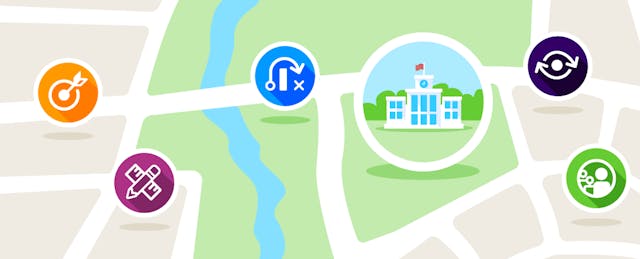My colleague Cameron Pipkin has described four keys to successful school improvement, validated by decades of research. The first key to bringing about dramatic gains in student achievement is having a strategic plan. The second key to success is establishing an educator effectiveness process to carry out your plan.
Think of this process as a roadmap that will guide your school improvement efforts. It should address the strategies you’ll use to execute your plan, as well as how you will measure success. It should set clear expectations among your staff, supported by professional development to help teachers implement these strategies in the classroom. And it should include frequent classroom observations, followed by discussion, reflection, and ongoing staff development targeted to each teacher’s individual needs.
This process has been proven to work. In an evaluation of our educator effectiveness process published in the Journal of College Teaching & Learning, researchers looked at the process at work in schools across 27 states. The results were remarkable; after just a year, these schools saw an average gain in student proficiency on standardized math and reading test scores that was nearly 25 percent greater than in neighboring schools.
Here’s a closer look at this proven five-step process.
1. Define the actions you’ll take to achieve your goals
For each goal you’ve outlined in your strategic plan, define the strategies and tactics you’ll use to achieve it.
For instance, suppose one of your goals is to personalize instruction for all students. To realize this goal, you might have teachers adopt a system of formative assessment to identify each student’s strengths, weaknesses, and instructional needs. You might describe a process for moving from whole-group instruction to differentiation and small-group instruction based on these assessment results, and from there to individualized learning—where every child is moving at his or her own pace, and the teacher is facilitating this.
2. Set clear expectations and targets for measuring success
Make sure each staff member understands his or her responsibilities and obligations under the plan. Specify how success will be measured and how staff will be evaluated in relation to these metrics.
To continue the example above, what are your expectations for how teachers will integrate formative assessment? What types of assessment should they use, and how frequently should this practice occur? What does effective differentiated instruction look like? Do you have rubrics in place to describe the ideal practices you are looking for?
3. Make sure educators understand the strategies you want them to use
Once you’ve identified the strategies that you want every teacher to adopt, you must teach them practices that can help them do this.
For instance, if you want teachers to integrate formative assessment, show them several techniques to check for student understanding, and let them choose the methods they’re most comfortable with. Model best practices for them, and create support structures (such as professional learning communities) to help them become proficient.
4. Conduct regular classroom walk-throughs to check for the desired strategies
To support teachers in using these strategies, it’s critical that you know how well they understand the strategies and are implementing them in their classrooms. The point is not to use this information in a punitive way, but as a snapshot of where teachers are—and what actions they should take in order to improve.
5. Follow up with discussion, reflection, and targeted professional development
Personalized learning isn’t just an effective technique for educating students, it’s also the best way to help teachers reach their professional learning goals. Using the data you’ve collected in walk-throughs and other observations, you should create personalized learning plans for your staff, supported with opportunities for ongoing professional development.
It’s important to note that this is a cycle of continuous reflection and improvement, not a one-time process. Just as you should continually teach and assess students, you should do the same for your staff.
At School Improvement Network, we call this five-step process our Educator Effectiveness System. It can help you achieve dramatic improvements in your school or district.



